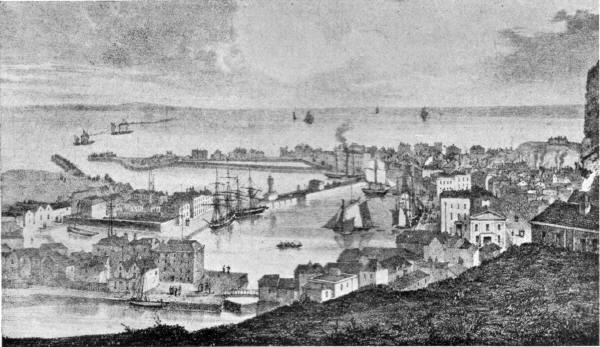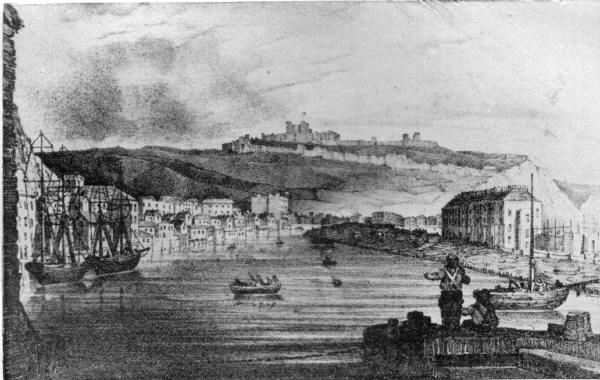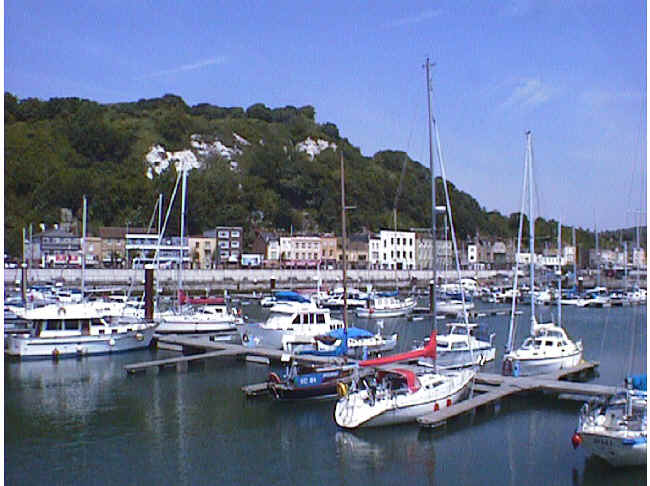| |
"Prior to 1834, the passage along the side of the Pent, at the back
of lower Snargate Street, was only available for foot passengers, and it
was called Pentside. The building of Commercial Quay, and the
widening of it for a road, was completed in 1834, and about the same time
the quay on the opposite side was built, at the back of the Esplanade.
The Slipway was made in 1850, and in 1852 was commenced the work of
cleansing the Pent, the building of Northampton Quay, the arching over of
the Dour, and the completion of Northampton Street up to new Bridge.
These works completed the inner harbour."
(J.B.J. 1907)
|
|
The picture above shows the Granville Basin as it was in the
1960s, with cargo vessels being loaded and unloaded by cranes on the quayside. Just
left of the centre of the picture, you can see the entrance to the tunnel that takes the
railway line from London to the Priory Station.
Behind the building on the quayside to
the left of the picture was the site of Holy Trinity Church.
All of the buildings on the quayside, and in Strond Street beyond, have long since been
demolished. The present day view can be seen in the picture bottom right of this
page.
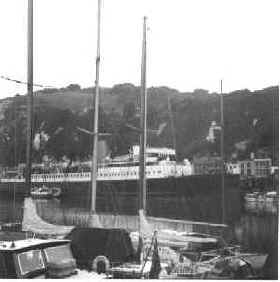
British Rail ship Canterbury
The picture above shows the British Rail ship Canterbury alongside Northampton
Quay (Wellington Basin) in the 1960s, shortly before being scrapped. The Canterbury,
was built for the Golden Arrow service in 1929 and continued in this role until
replaced by the Invicta. In 1934, she was specially chartered to carry
Princess Marina to Dover for her marriage to the Duke of Kent. In her heyday she was
a luxurious ship, with fully appointed cabins and a palm court, decorated in oak and
mahogany. Although licensed to carry 1,700 passengers, she was not intended to take
more than 300. Such was the luxury of travel from London to Paris on the Golden
Arrow - Fleche d'Or service.
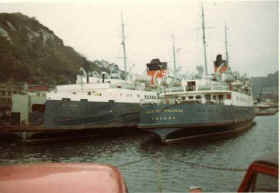
Lord Warden and Maid of Orleans
During the winter months, when less people wanted to cross the Channel, some of the
ferries were laid up in the Wellington Basin for maintenance. The picture shows the
car ferry Lord Warden and the passenger ferry Maid of Orleans alongside
Commercial Quay. The Lord Warden, launched from William Denny's shipyard on
the Clyde on 14th December 1951, was the first purpose-built drive-on car ferry. |
|
Today, the entire inner harbour including both the Wellington
and Granville docks has been turned into a yachting marina. All signs of commercial
activity on the quayside has long since disappeared.
The pictures below show how the
area looks today (1999).
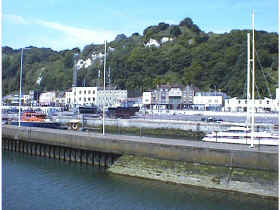
The slipway
This view of Snargate Street across the slipway was taken from Slip Quay.
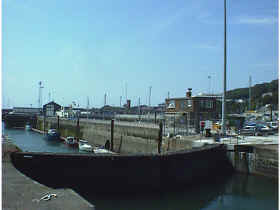
Crosswall Quay
This view of Crosswall Quay and the Wellington Basin gates was taken from the Union
Street swing bridge.
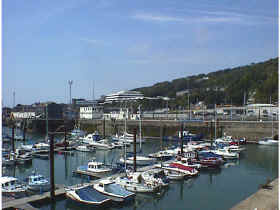
Tidal Harbour
This view of the Tidal Harbour was taken from the Esplanade (now a car park).
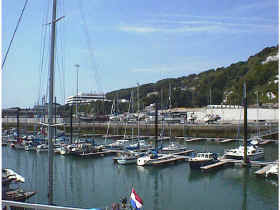
Granville Basin
The picture above shows the Granville Basin taken from the Union Street Quay.
Compare this view with the picture of the Canterbury (above, left).
|
| |
"A new Harbour Board was constituted in 1861, and that Board being
deprived of the revenue from Passing Tolls, the finances did not permit of
any important works being undertaken for several years. In 1871, the
5ft. deepening of the inner basin was commenced; and when that was
completed, and some additions made to the quay walls at the north end of
Custom House Quay, it was re-opened and re-named the Granville Dock.
The Clock Tower was built about the same time, and improvements made in
the Wellington Dock Quays, the entire cost of the works from 1871 to 1879
amounting to £77,416. In 1888, the Wellington Dock gates were
widened to admit the larger Channel steamers. The Wellington bridge
as built in 1844, was replaced in 1904 by a massive steel bridge, swung by
a combination of hydraulic and electric power, to carry both the roadway
for vehicular traffic and the railway to the Liner landing-stage on the
Prince of Wales Pier, and that completed the development of the harbour
inside the north and south piers." (J.B.J. 1907)
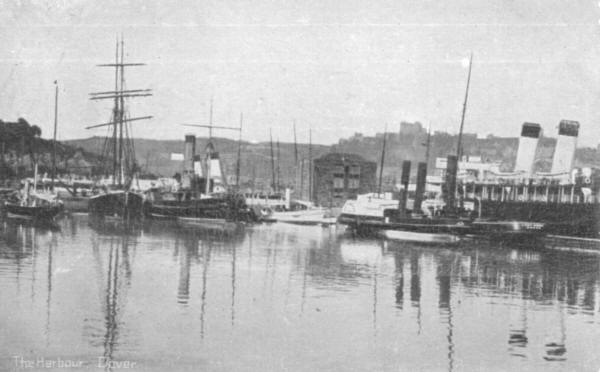
This card, which almost certainly dates from before the
Great War, shows two of the "Ladies" (Harbour Board tugs)
- probably the Lady Vita and the Lady Curzon - alongside a
cross-Channel steamer. On the left is a sailing ship, most likely a
collier.
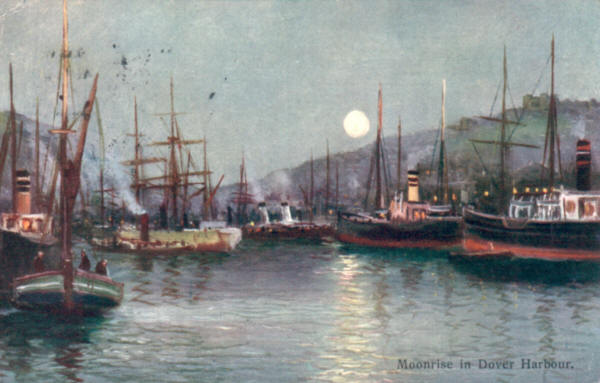
This card, depicting a rather romanticised view of the
Basin, is from a painting entitled Moonrise in Dover Harbour.
It shows a mixture of steam and sail.
|
